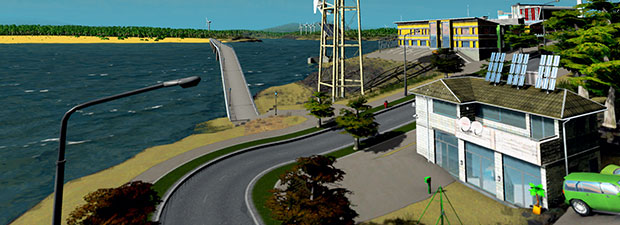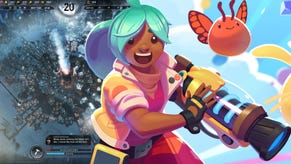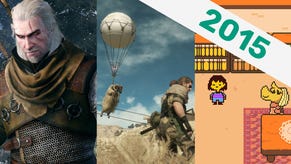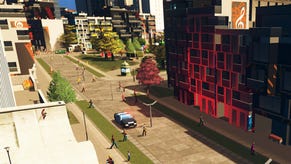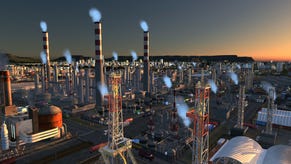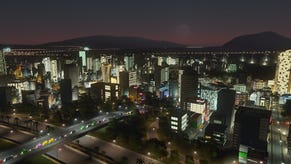A Cities Skylines Succession Diary: The End
How not to kill a city
Sorry for the delay on concluding this - one person got behind, then we had a domino effect where everyone else was off-schedule, then we got distracted by a bumblebee and... Here it is, though: the final part of the Cities: Skyline succession game I've been playing with Jonathan Shipley and Dan Corns, in which we pass our savefile onto the next person whenever our shared city levels up. In this last part: so much death, and yet not enough.
Day 10: The Legacy
Jonathan: The life of a mayor is a strange one. We begin, as presumably do all who occupy a new position of public service, full of enthusiasm for the challenges we face and powered by optimism. We mean well, and sometimes we even do well, in parts - the odd successfully designed bus system here, the odd spike in public happiness traced back to the placement of a simple park there. Sometimes, when we make mistakes, the way we recover is proof of our imagination and fortitude: like when I accidentally killed 1600 people but cheerfully repopulated the town with a bunch of new, healthy and - frankly - better people.
In the end, however, it’s all about legacy. Just ask Blair. I knew this turn would be my last and, to be honest, I just wanted to leave something behind. Something beautiful. Something which would earn me praise, and make people think I was the best.
So I laid down my obsession with the efficiency of our public transport system and relaxed about the water pollution, which was by now measurable only in homeopathic quantities in any case. And I began, with one eye on the clock, to plant trees, build paths, and bring a bit of joy, a bit of spiritual love, to the venal, undereducated cretins who I was in any case getting bored of exercising my Mayoral duties in the service of.
And thus I finished my turn. I looked at the city and it was green. It was green and it was good. It had stopped growing, yes, and my manic obsession with roundabouts had driven its citizens to a state of constant dizziness, but I was happy. I was the best mayor. The best of ALL the mayors.
I pushed aside the wine bottles, lay down on the carpet and finally I slept.
Day 11: New Danland
Dan: Let's face it. This city only grows with me at the helm. In just one go I turned around a desert island from backwater half off the map to thriving export centred, job creating Manhattan.
Except it didn’t turn out quite that way.
I did manage to build over an entire island in one go, (finding out in the process you could also build on sand, and that this affected the type of building that would appear) but built too quickly and became Mr Macro again to Jonathan’s Mr Micro.
There was no real attention to detail as I inherited a large demand for Industrial zones, and so I hit upon the idea of outsourcing all the unsightly industrial mess to one off shore island and keeping the main city (looking lovely and working well) to its manicured, tree-lined streets of commercial and residential properties.
However I don’t think the game really works that way. First of all, it's all about scale. I also have a private saved game with a city about 5 times the size of this shared map, and so such a demand for Industry in that game would necessitate the turning over of an entire map square to feed the demand.
Our city being smaller, and with demand for industry being in proportion to this, turning over an entire island was overkill, as I soon discovered. A few estates and demand was met and located a long way from the rest of the city. Residential and Commercial demand crept up, and so I relented and quickly filled in the gaps had created with these.
I built two bridges from the mainland (one rail, one road) to service the island. The rail connected easily to our existing network (weaving through the city, thanks to a certain mayor's forethought) and I built two accompanying stations on the island - one for freight and one for passengers.
The roads were, admittedly, more of a slapdash affair. Not in keeping with the carefully thought out layouts in the main city.
I wanted a quick, vast, out-sourced industrial estate covering the whole island but ended up with a messy compromise. My attempts at gentrification were halted because apparently we reached the maximum number of trees on the map - see the forests surrounding the railways.
In short: Cash up! Exports way up! Traffic eased! City not blighted by more industry (apart from the new parts, but maybe we can phase that out).
On page two: All things must pass. By force, if necessary.
Day 12: Green, Unpleasant Land
Alec: All things must end. There are only three ways our city could reach a conclusion: we decide maxing out its level is enough, we simply lose interest and move on, or we go all Blake's Seven and make tragedy the denouement. Yes, I'm afraid I chose the latter. Unfortunately Cities: Skylines lacks the apocalyptic destruction tools of early Sim Cities, so no earthquakes or alien invasions. Simply bulldozing everything feels uninteresting too. So I chose tactical Armageddon: making tiny changes which I hoped would eventually result in the most chaos.
First, I removed the bridge linking the island paradise of New Danland to the mainland. Let's see what happens when they're forced to live in their own filth.
Then I removed every road leading out of town, and decoupled the railways too. Traffic - and new residents - continued to pour in for a remarkably long time, each visitor blissfully unaware that they were consigning themselves to a prison. In order to maximise the population intake, and in turn the overload on the city's systems, I built a huge and hideous residential area just off the motorway.
While New Danland rapidly turned to grime and crime, the main city, remarkably, held its own. Perhaps we'd given our people such happy lives that they didn't at all mind that they could never leave? Time to change that.
Remove water reclamation facilities, build sewage outlet upstream from water pumps, wait.
The unwitting citizens drank their self-poisoned water, and even our generous number of medical facilities couldn't possibly keep up. It wasn't long before the city's population was dropping at rate of some 2000 per week. What I'd inherited as a happy town of 40,000 plummeted to 3,000, as the city was coated in squalor and death. Maybe that's an ending.
Total wipeout was not my objective, however. Older readers may recall that, back on turn 6, I built a single beachside house, carefully zoned so that it could have no neighbours and the most spectacular views in the land. I had named it The Luckiest Guys In Town, and that name was my vow - I did not intend to break it.
I built a separate, self-contained and a clean water supply just for this one house, to keep it safe from the The New Brown Plague. I placed a police station, a fire station, a school and an infirmary right next to it, so that the Luckiest Guys would be protected from other disasters and kept busy. I placed parks and trees to shield them from the horror happening outside their back door. It worked: remarkably, the land value went up and the Luckiest Guys' happiness remained maxed-out, even though, just a stone's throw away from their micro-paradise, corpses lined the streets. Maybe that's an ending.
I had killed so many, and I had made a game of it. I did have one crisis of conscience, however. A skull and bones icon appeared over the school near The Luckiest Guys' house. Someone had died in that school, and their body lay festering there. That someone, I suppose, was a child.
I've done a very, very bad thing.
It turns out that Cities: Skylines doesn't believe in unhappy ever after. Once the population reached around 2000, something very peculiar happened. It started going up again. People were moving back in to this land of death.
This wasn't the plan. One thing for it: cut off all the roads and railways into town too. Down we went to around 1500. Maybe that's an ending.
Then it started going up again.
What.
There is literally no way in, unless you walk, swim or parachute, and I couldn't find any sign of that. Sure, some of the remaining 1500 might have turned to rampant and unprotected sex to console themselves in this darkest hour, but surely the fertile fraction of them couldn't couldn't generate some 30 babies per week, every week? Perhaps they could. There are things I don't want to think about there.
Worst of all, they were happy. Happy! Was this some city-wide Stockholm Syndrome? "All I really want from life is corpses piled up on my doorstep, drinking water which tastes of faeces and a complete breakdown of law and order."
I'd not bulldozed any of buildings after the apocalypse, but now (with the help of an auto-bulldoze mod) I wiped out everything empty, for fear that these concrete shells were helping attract newcomers despite their deleterious effect on land value. It was quite beautiful to see the city return to the land, to see nature abhor a vacuum and reassert itself:
Maybe that's an ending: the calm death of a city. But that's not the whole story. Still the population steadfastly refused to drop. How were they getting in? More to the point, why? What happened next was the first time I'd been truly horrified by all this. Hoping it would discourage new residents from skydiving in, I ramped up taxes as high as I could. Then, and only then, did the population become unhappy and the numbers start dropping again.
You sick, sick bastards. Money's all you care about, isn't it? You're happy to step over your neighbour's sun-bleached bones to get through your front door, but the second someone asks you to reach into your pocket it really is the end of the world.
People. Even a mass-murdering psychopath such as I knows monsters when I see 'em. But they were leaving (somehow): that's what mattered. The world returned to green:
Even so, the population remained stuck around 900. I considered continuing to remove services until we reached zero, but then I saw that my cause was lost.
The Luckiest Guys were gone. They knew their luck had run out at last.
I think that's an ending.







